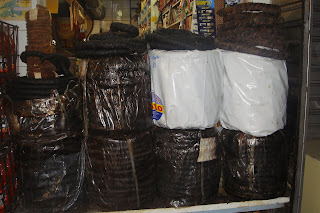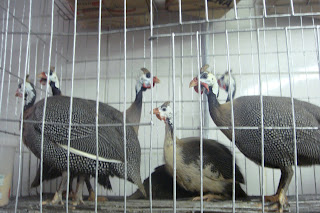We spent two days this week walking in the mercado central of Belo Horizonte. I was grinning the entire time. The best part of going to Belo Horizonte's mercado is that this town is really not a tourist town, so I think I was the only non-brazilian there. This is beneficial for my experience because I am able to really see how people go about their food shopping and selling without worrying about a 'show' being put on for tourists.
Here are some of the highlights:


Here you can see the mandioca root which this seller efficiently removed the skin with his machete so it was prepared for us to cook. We enjoyed the mandioca fried in oil which makes it take on a french fry like consistency.



Then we got to the live animal section which was a clamorous site of activity. Cages upon cages were filled with thousands of birds of every type you could imagine, dogs, cates, rabbits and other rodents. Birds were the most popular and they are one of my favourite. Though the conditions were questionable, all the birds did look quite healthy. The parrots were cheap but some of the more rare birds quite expensive. For example in Canada last I checked you could buy a cockatiel or lovebird for $180. Here you could buy a cockatiel for $45 or a lovebird for $30. For the more exotic birds - namely the Canada goose - the price was 5000 R or $2900 for the pair.
Being in the market I obviously assumed that some of the birds were for pets, but that some of them were for consumption like the ducks, the chickens and some of the geese. When I told this to Gigi she was horrified that I would think such a thing and so maybe they are all just for pets. I wish I would have asked. Apparently I continue to only see cooked meet when I look at certain animals.


Here are pequi fruit. It is native to Brazil and very popular in Minas Gerais. Its seeds can also be used to produce an oil.







Bryanna as promised in Montreal I've been reading about your interesting travels! Enjoy and be safe!!!! (I think Oden misses you!)
ReplyDeleteCarol
I live in Brazil all my life and I never went to Belo Horizonte, now I believe I have to go.
ReplyDelete